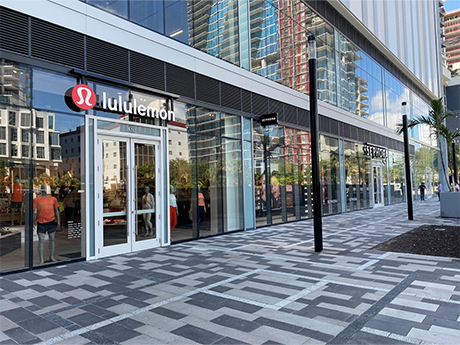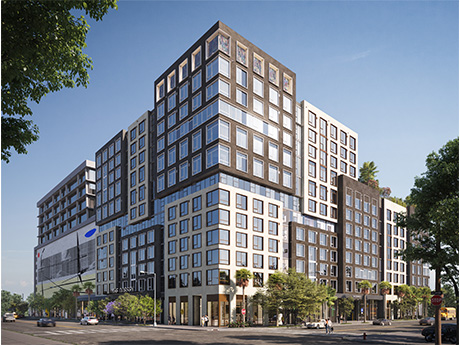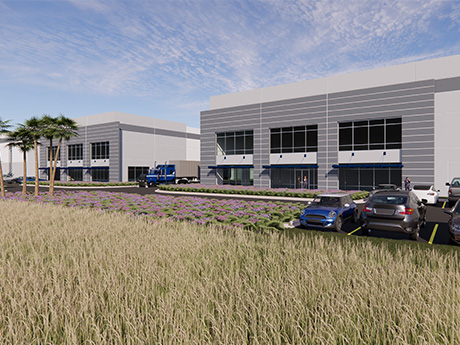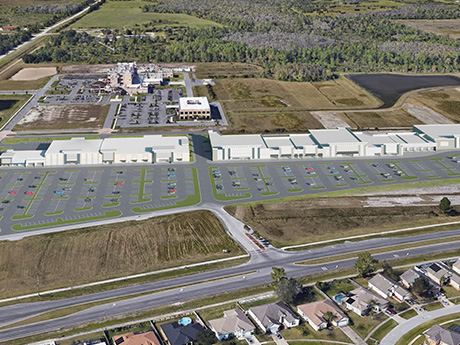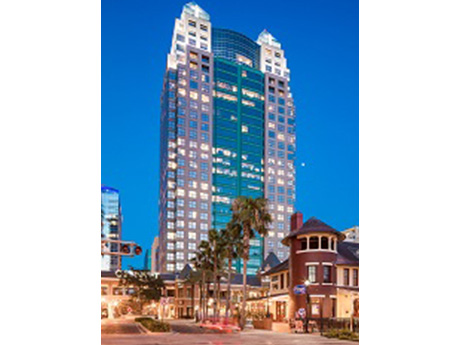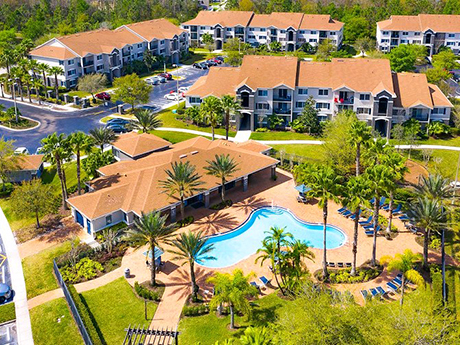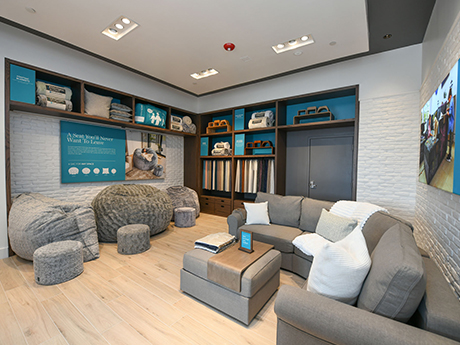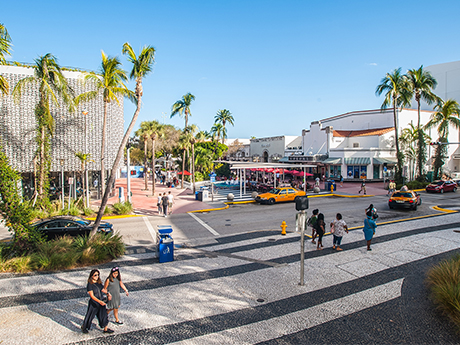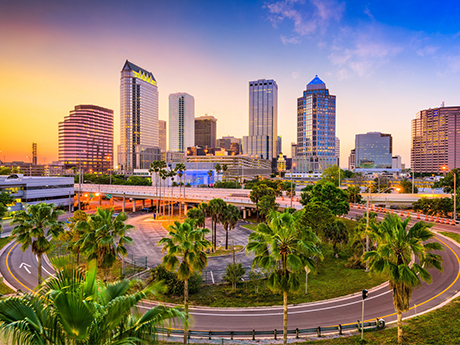The retail sector in South Florida is undergoing adjustments that reflect the region’s dynamic economic landscape and evolving consumer preferences. One notable trend is evident in the restaurant sector, where owners increasingly aim to expand by opening new locations and entering lucrative markets. This trend is primarily driven by consumer spending, particularly the continual growth of Miami’s tourism industry. Visitors directly inject capital into the local economy, leading to increased disposable income that often circulates back through experiential commerce such as restaurant sales. A clear indicator of the local market’s strength is the ongoing rise in rental asking rates, significantly surpassing national averages. A robust 4.6 percent upturn in asking rent this year, as reported by CoStar Group, demonstrates retailers’ ability not just to survive but to thrive in a market with elevated asking prices compared to the rest of the state. This upward trend in rent is accompanied by a low 2.8 percent vacancy rate, according to CoStar data, indicating a competitive landscape where profitable lease opportunities are increasingly scarce for tenants. The retail sector within the restaurant industry continues to thrive, showing significant activity and heightened interest. The influx of high-net-worth individuals and a post-pandemic resurgence in immigration …
Market Reports
While many cities grapple with a declining population, softening rents and a struggling office market, Miami is riding a wave of population growth and apartment demand. This stems from the usual factors — sun, lifestyle and low taxes — as well as something unprecedented: an influx of large office users. New-to-market office tenants are transforming Miami’s economy and helping offset the challenges of inflation and rising interest rates. Miami multifamily fundamentals remain strong, with plenty of liquidity in the market. Our economy is more diversified than ever, and this has made it one of the most desirable markets in the country. Supply and demand People and businesses fleeing states with higher taxes and longer pandemic restrictions helped fuel Miami’s population surge between 2020 and 2022 and led to record-breaking rent growth during that period. Miami has become a magnet for large financial and tech firms, with well-heeled companies like Starwood Property Trust, Citadel Securities, BlockChain and Blackstone Group taking new office space. All told, a record 57 companies relocated or expanded to Miami-Dade County last year. Between May 2022 and May 2023, Miami added over 83,000 jobs, more than a 4 percent increase. Miami’s unemployment rate as of May 2023 …
Orlando’s industrial market continues to maintain strong market fundamentals. Despite leasing activity temporarily softening at the midway point of 2023 compared to the end of second-quarter 2022, exceptionally low vacancy rates persist, putting upward pressure on asking rental rates and further strengthening developer confidence in the market. With its strategic locational advantages and diverse tenant mix, the sector is well-positioned for future growth. According to Florida Commerce, Orlando’s unemployment rate is 2.6 percent, well below the national rate of 3.6 percent. Labor shortages remain, as jobs increased by 5,300 in the industrial-using sector and 6,200 in trade, transportation, and utilities. At the same time, Central Florida’s population growth — along with the state’s business-friendly conditions, from no state income tax to relative affordability — consistently spurs demand for e-commerce logistics and warehousing throughout the region. Asking rates surge Year-to-date industrial leasing volume in Orlando has been 4.4 million square feet, 2.4 million square feet of which was in the second quarter. Total vacancy stood at 3.5 percent in the second quarter, significantly lower than the national vacancy rate of 5.4 percent. The average asking rate for industrial properties in Orlando was $10.77 triple-net per square foot, reflecting a 5.4 percent …
The demand for retail space throughout Central Florida has been extremely high as new concepts are moving into the marketplace due to the mass exoduses from New York City and California. With the major population shift, we are running into the issue of limited supply to lease. Vacancy rates are currently projected at 3.8 percent, which is approximately 100 basis points below the 10-year historical average. Vacancy rates are projected to meet the mid-4 percent range by the end of 2023 due to the expected completion of more than 700,000 square feet of retail space during the fourth quarter, according to research from CoStar Group. Some developers are backing out of ground-up development deals due to the heightened labor and construction costs that every firm is experiencing. However, there are still some notable developments occurring in certain trade areas such as Minneola, Lake Nona, Apopka (Kelly Park) and Davenport, which are just some of the areas with projects expected to deliver in the fourth quarter of this year. These new ground-up projects require lessees to pay a higher rent to make these deals pencil out. The current average asking rate in Orlando is $27.77 per square foot, well ahead of …
The Orlando office market saw improved office activity in the second quarter after a somewhat slow start to the year. Quarter-over-quarter, the average deal size rose by 11.2 percent with Downtown, South Orlando and East Orlando as the three submarkets benefitting from an increase in office leasing activity. The majority of institutional landlords in downtown Orlando are some of the early adopters of flight-to-quality phenomenon, and as a result, tenants from other submarkets have shifted their focus to the city’s Central Business District (CBD). On the other hand, South Orlando enjoys a built-in advantage of having perhaps the greatest number of restaurant options in the greater Orlando area, with easy access to both Sand Lake Road and Millenia Mall areas offering various food options. The need to be co-located with some of the military branches located in Central Florida Research Park drives many simulation and military/defense sector tenants to seek office space in East Orlando, also providing nearby access to the University of Central Florida. Aside from geographical location, more and more tenants are seeking out higher-quality office space while rightsizing their footprint. This is predominantly fueled by flex/remote office schedules combined with the need for employers to provide an …
Orlando remains one of the strongest multifamily markets nationally despite the slowdown being experienced in commercial real estate at large. Its strength is largely defined by growth in rent, supply, upcoming development opportunities, employment and the local economy, which have all contributed to healthy fundamentals. Being a top U.S. tourism destination has also helped with more than 74 million visitors coming to Orlando in 2022. Local tourism has created 212,000 jobs as of year-end 2021, and the city is home to nine world-renowned theme parks that are frequented by tourists. Orlando has also proven to be a very attractive and viable place to live long-term. The city is the fourth-largest in Florida, with an estimated population of more than 312,200 in 2023 and over 2 million within the metropolitan statistical area (MSA). The area’s population growth has supported multifamily growth opportunities, ensuring there is a vast renter pool and demand for the inventory that continues to be delivered. That has propelled rent growth up with submarkets like Colonial Town and Florida Center North, which are still posting year-over-year increases between 10 and 16 percent, significantly higher than the national average. Overall supply has also held up well with 6,103 units …
Central Florida retail is alive, well and growing, thanks in large part to Florida’s continuing resilience to the nation’s economic challenges. Thousands of people are moving to the state each week, the Orlando area’s economy continues to diversify beyond tourism and residents continue to show confidence with their retail spending. That said, there are significant challenges facing new retail developments, due to the cost of construction and other inflationary pressures. We expect this to be a major issue for the rest of this year, and it will require thoughtful planning for everyone involved in these projects. As we look at the remainder of 2023, we see two big takeaways: • For brick-and-mortar retail, it’s important for developers and owners to bring in concepts that are new and fresh. In some cases, this involves established retailers getting creative with their spaces, like what Macy’s is doing with its new Market by Macy’s concept, which uses a smaller footprint than traditional Macy’s stores. • To make new retail developments happen, developers, landlords and tenants need to be inventive in how they structure deals, whether it’s sharing in construction cost overages or giving tenants more time to get their spaces ready. With that …
A wave of new-to-market office tenants — specifically legal tenants following the influx of financial firms and tech companies — continue to expand their presence in Miami. The trend further solidifies the city’s spot as a top destination for companies seeking reduced taxes, strong talent and vibrant communities. Looking back at the first quarter of 2023, net absorption totaled over 81,000 square feet (compared to 76,000 square feet in the first quarter of 2022), marking the third-highest quarterly total since 2020. Most leasing activity occurred in the Central Business District (CBD) and in Class A product in Wynwood and Coral Gables as tenants continue to lease high-quality space. However, the lack of availability in quality product, as well as the overall economic uncertainty, has led to a slowdown in leasing volume to start 2023 — particularly among new-to-market tenants. Leasing activity totaled 750,000 square feet in the first quarter compared to 1.5 million in fourth-quarter 2022. The quarter closed with a 16.3 percent vacancy rate, the lowest level since the onset of the pandemic in early 2020. Class A availability fell 260 basis points to 21.1 percent year-over-year with the largest drops recorded in downtown Miami, which fell 540 basis …
Miami is a vivacious city renowned for its scenic beaches, sunny climate and dynamic nightlife. The South Florida city is also a hub for a flourishing retail industry, which serves an eclectic blend of both locals and visitors. Miami’s retail market is characterized by its diversity, with a broad spectrum of retailers ranging from luxurious, high-end boutiques to small, locally owned businesses. This range of retailers is a reflection of the city’s diverse population, which includes a sizable Hispanic community, as well as individuals from all corners of the globe. Consequently, Miami’s retailers must be adept at catering to a wide range of tastes. One of the most notable trends in the Miami retail market in recent years has been the growth of e-commerce. Like many other cities around the world, Miami has seen a significant increase in online shopping. This has presented both challenges and opportunities for retailers in the city. On the one hand, the rise of e-commerce has led to increased competition for brick-and-mortar retailers in Miami. Online retailers such as Amazon and Walmart have made it easier than ever for consumers to shop from the comfort of their own homes, and this has put pressure on …
Once bypassed by national developers and investors for larger, metropolitan cities like Miami, the real estate community is now realizing what locals have known for years: Tampa is trending. Tampa Bay’s recognition as one of the country’s top places to live has trickled into the region’s office market, which as of the first quarter of the year, has continued to reap the benefits. While some credit the Tom Brady effect to Tampa’s rise into the national spotlight, the Tampa Bay region is seeing growing demand in other economic sectors beyond sports, including housing, business and leisure. In fact, Time Magazine just featured Tampa as one of only four U.S. cities in its highly coveted 2023 list of the “World’s Greatest Places.” Flurry of activity to start 2023 For the first time in five quarters, the Tampa Bay office market recorded positive absorption of more than 55,000 square feet thanks to more companies moving into space rather than vacating it, JLL’s first-quarter Office Insight Report for 2023 shows. This can be largely attributed to Reliaquest’s move into its 140,000-square-foot headquarters located at Thousand & One Water Street, where it is currently occupying 120,000 square feet, and which made up the lion’s …


